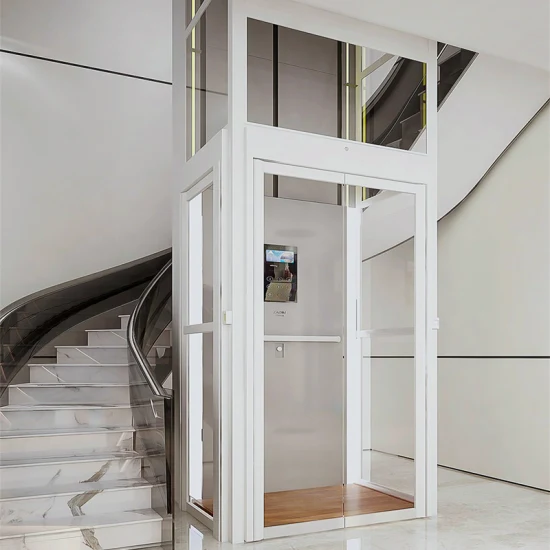Cost Effective Lift Repair Near Me: Professional Technicians at Your Service
Cost Effective Lift Repair Near Me: Professional Technicians at Your Service
Blog Article
Exploring the World of Lifts: Common Issues Dealt With by Different Lift Mechanisms
As we browse with the upright transport systems of modern-day structures, elevators stand out as a vital element of our day-to-day lives. From hydraulic lifts to grip systems and machine-room-less styles, each lift kind comes with its set of typical problems.
Hydraulic Elevators
Hydraulic elevators, usually liked for low-rise buildings, use fluid pressure to control the motion of the elevator automobile (lift repair companies). This device involves a hydraulic pump pressing oil into a cyndrical tube, creating the lift to relocate the desired instructions. While hydraulic lifts are known for their smooth and silent operation, they do come with their very own set of common problems
One prevalent issue with hydraulic elevators is oil leak. Furthermore, issues with the control system, such as defective shutoffs or a malfunctioning pump, can trigger disruptions in the elevator's movement.
Routine upkeep and prompt repair work are vital to make sure the smooth performance of hydraulic lifts. By resolving these common concerns proactively, structure proprietors can minimize downtime and make sure the security and performance of their upright transport system.
Grip Lifts
When considering upright transportation systems in buildings, one more common kind apart from hydraulic elevators is the traction elevator. Grip elevators operate utilizing a system of ropes and counterweights that relocate the elevator automobile by gripping onto the hoist ropes. This device enables smoother and faster vertical transportation compared to hydraulic systems.
One of the common problems dealt with by grip elevators is rope wear. The constant motion of the ropes within the grip system can cause tear and wear in time, possibly triggering the lift to breakdown or end up being dangerous for usage. Regular evaluations and upkeep of the ropes are important to make sure the lift's proper performance and safety and security.
An additional issue that traction lifts might experience is connected to the control system. Problems with the control system can lead to concerns such as erratic activity, hold-ups in action times, and even total shutdowns. Routine testing and maintenance of the control system are important to prevent such problems and make sure the elevator's dependability.
Machine-Room-Less (MRL) Lifts

Among the crucial parts of MRL lifts is the small gearless grip equipment that is mounted within the hoistway. This equipment efficiently drives the lift vehicle without the demand for large equipment found in conventional traction lifts. Furthermore, MRL lifts typically use a weight system to stabilize the vehicle, more improving their energy efficiency.
In spite of their benefits, MRL lifts might encounter obstacles associated with repair and maintenance as a result of the constrained space for devices installation. Availability for servicing components within the shaft can be limited, needing specialized training for service technicians. Proper upkeep timetables and routine assessments are important to guarantee the ongoing smooth procedure of MRL elevators.
Overloading and Weight Limit Issues
Are lifts furnished to take care of excess weight loads effectively and securely? Overloading and weight limit issues are important issues in elevator operations. Elevator makers layout lifts with certain weight capabilities to guarantee passenger safety and security and tools longevity. Exceeding these weight limitations can lead to different problems, including mechanical failings, hold-ups, and security hazards.
When elevators are strained, it puts excessive strain on the motor, cable televisions, and other components, potentially causing breakdowns or break downs. Security devices such as sensing units and overload sensing units remain in area to avoid lifts from moving if they identify excess weight. In addition, surpassing weight restrictions can bring about enhanced energy consumption and wear and tear on the elevator system.
To mitigate overloading concerns, building managers must prominently present weight limits in lifts and inform passengers on the significance of adhering to these limitations - lift repair companies. Normal maintenance checks by certified technicians Discover More Here can additionally help make sure that lifts are operating within risk-free weight specifications. By addressing overloading and weight limitation issues proactively, building proprietors can improve lift security and efficiency
Electric System Failures
Going beyond weight restrictions in lifts can not only cause mechanical issues yet likewise potentially contribute to electrical system failings within the lift framework. Electric system failings are a vital issue in elevator procedure, as they can create unexpected shutdowns, malfunctions, or also safety and security threats. One usual electric concern is the getting too hot of parts because of too much current flow brought on by overloading the lift beyond its ability. This can cause damage to the circuitry, control, or electric motor systems, leading to costly repairs and downtime.
Additionally, power rises or variations in the electric supply can also interfere with the elevator's operation, impacting its efficiency and safety. These electrical disruptions can damage sensitive elevator elements such as control panels, circuit card, or sensing units, bring about system failings. Routine upkeep and evaluations are vital to recognize and deal with prospective electrical problems without delay, ensuring the effective and secure operation of elevator systems. By adhering important link to weight limits and performing routine electric system checks, structure proprietors can alleviate the danger of electrical failings in lifts.
Verdict

Hydraulic lifts, typically favored for low-rise buildings, use fluid stress to manage the motion of the lift auto.When considering vertical transportation systems in structures, one more typical type apart from hydraulic lifts is the traction elevator. Traction elevators go to my blog run making use of a system of ropes and counterweights that relocate the elevator vehicle by clutching onto the hoist ropes. Unlike typical lifts that require a separate maker space to house the devices, MRL lifts incorporate many of the components within the shaft, eliminating the requirement for a committed maker area.In final thought, elevators deal with common concerns such as hydraulic breakdowns, traction system failings, and electrical system issues.
Report this page